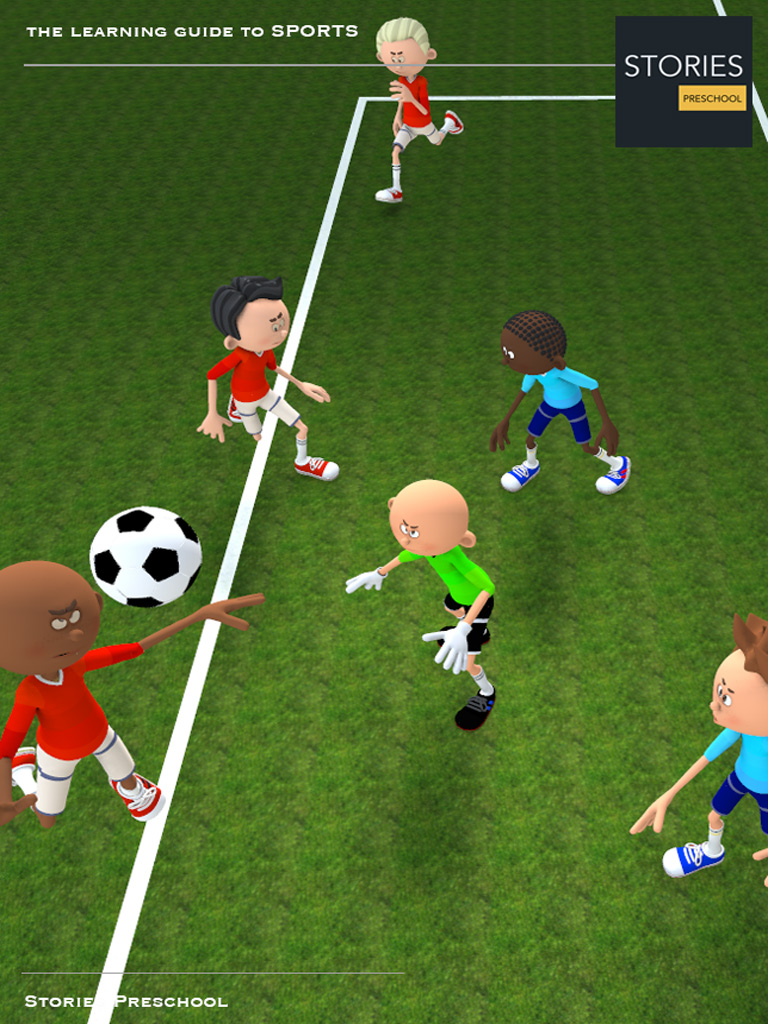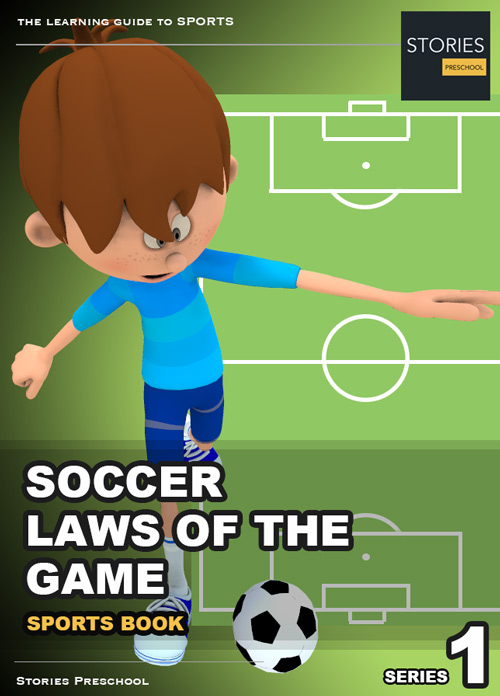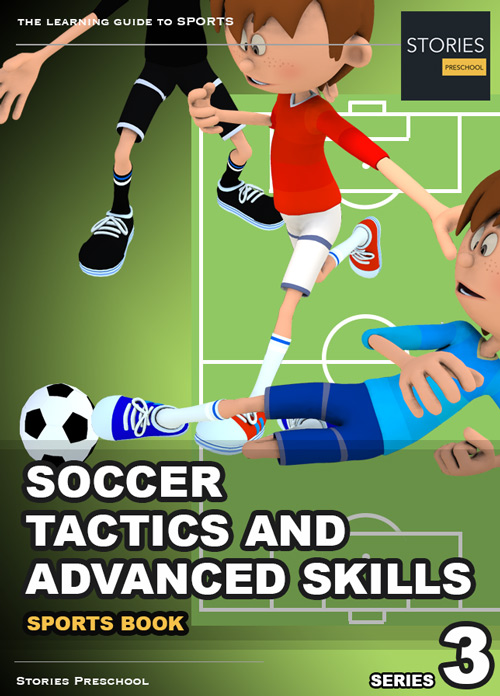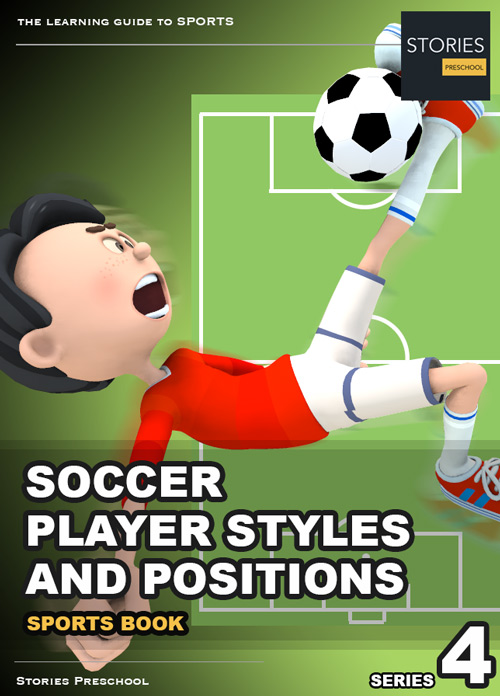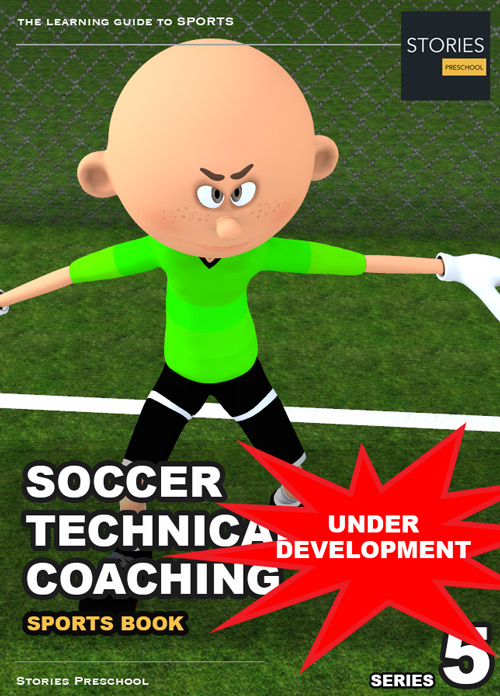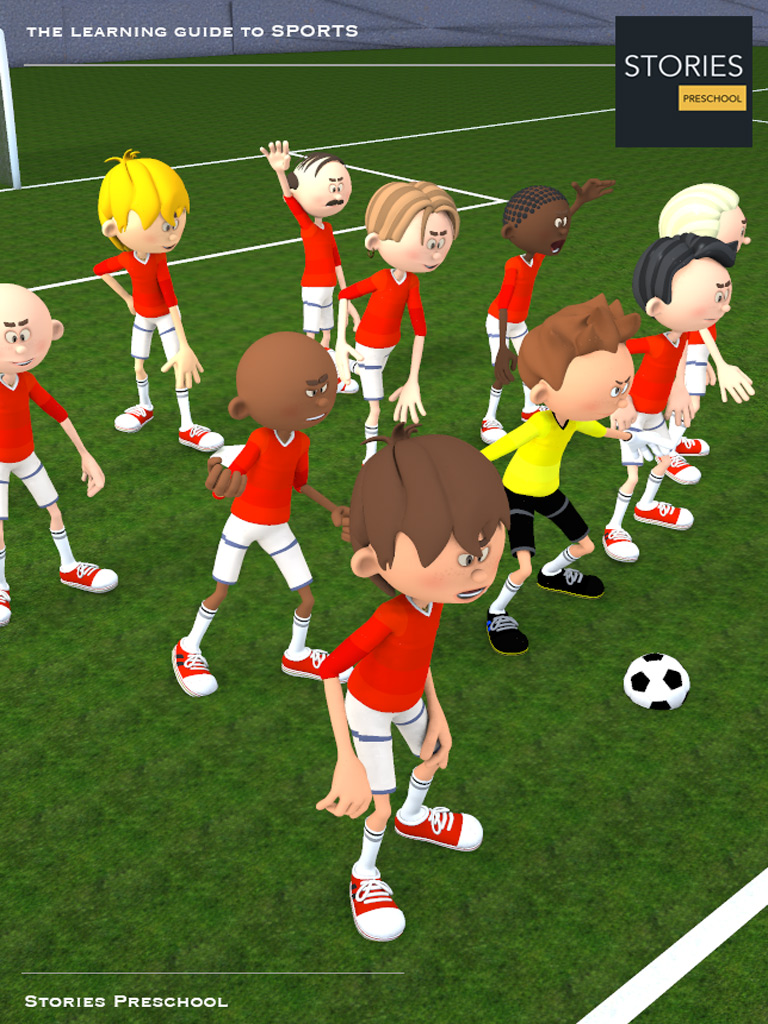Soccer
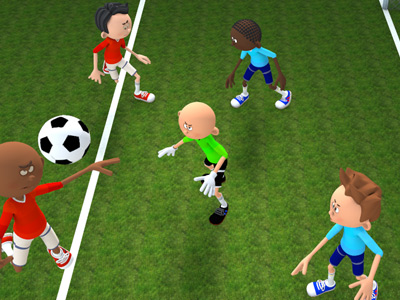
Soccer Bicycle Kick
A bicycle kick, also known as an overhead kick or scissors kick, is a physical move in association football. It is achieved by throwing the body backward up into the air, making a shearing movement with the lower limbs to get one leg in front of the other in order to strike an airborne ball rearwards above head level, without resting on the ground. In most languages, the maneuver is named after either the cycling motion or the scissor motion that it resembles. Its complexity and uncommon performance in competitive football matches makes it one of association football's most celebrated skills.
Bicycle kicks can be used defensively to clear away the ball from the goalmouth or offensively to strike at the goal in an attempt to score. The bicycle kick is an advanced football skill that is dangerous for inexperienced players. Its successful performance has largely been limited to the most experienced and athletic players in football history.
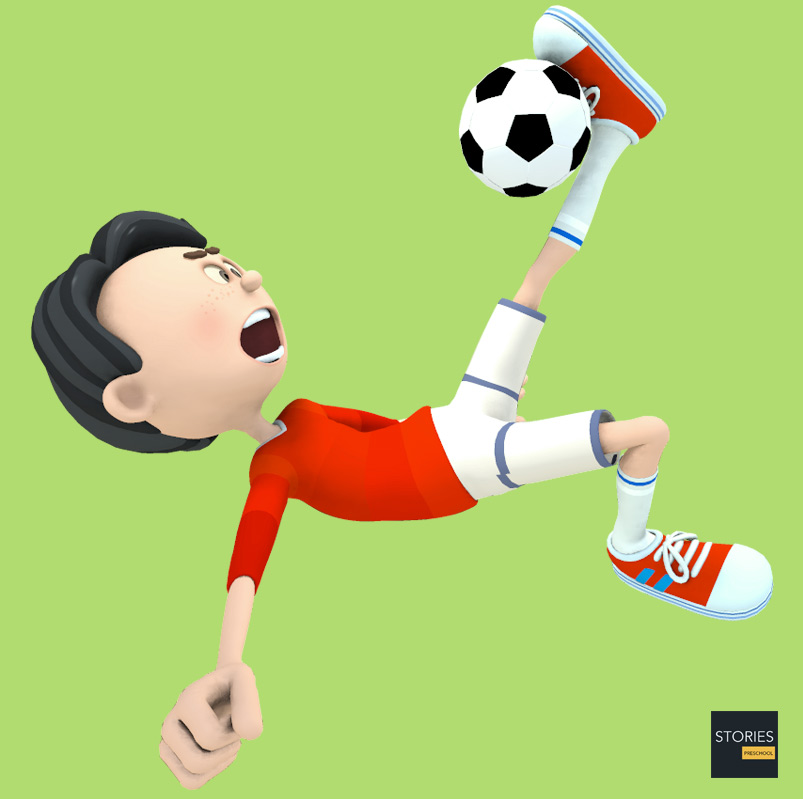
The bicycle kick was invented in South America, possibly as early as the late 19th century, during a period of development in football history. Innovations like the bicycle kick were the result of local adaptations to the football style introduced by British immigrants. Football lore has many legends on the possible origins of the bicycle kick. Newspaper archives from the beginning of the 20th century evidence a complex, multinational history for the bicycle kick's invention, naming, and diffusion.
As an iconic skill, bicycle kicks are an important part of association football culture. Executing a bicycle kick in a competitive football match, particularly in scoring a goal, usually garners wide attention in the sports media. The bicycle kick has been featured in works of art, such as sculptures, films, advertisements, and literature. The maneuver is also used in other similar ball sports, particularly in the variants of association football (like futsal and beach soccer). The controversy over the move's invention and name in Brazil, Chile, and Peru (and its status as an element of the notable Chile–Peru football rivalry) has added to the kick's acclaim in popular culture.
Name
The bicycle kick is known in English by three names: bicycle kick, overhead kick, and scissors kick. The term "bicycle kick" describes the action of the legs while the body is in mid-air, resembling the pedaling of a bicycle. The maneuver is also called an "overhead kick", which refers to the ball being kicked above the head or a "scissors kick", reflecting the movement of two scissor blades coming together. Some authors differentiate the "scissors kick" as similar to a bicycle kick, but done sideways or at an angle; other authors consider them to be the same move.
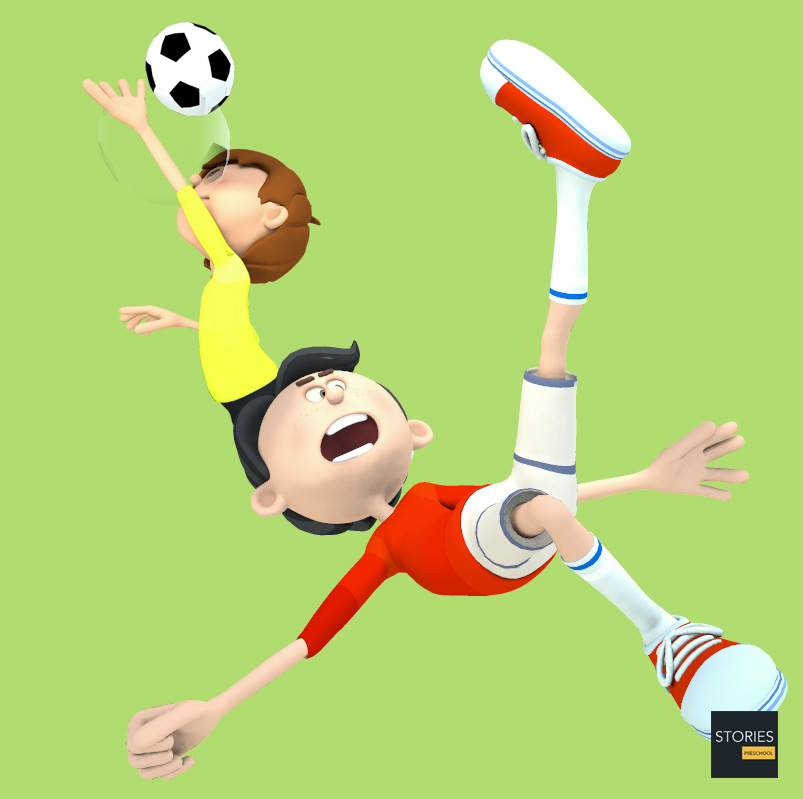
In languages other than English, its name also reflects the action it resembles. Sports journalist Alejandro Cisternas, from Chilean newspaper El Mercurio, compiled a list of these names. In most cases, they either refer to the kick's scissor-like motion, such as the French ciseaux retourné (returned scissor) and the Greek psalidaki, or to its bicycle-like action, such as the Portuguese pontapé de bicicleta. In other languages, the nature of the action is described: German Fallrückzieher (falling backward kick), Polish przewrotka (overturn kick), Dutch omhaal (turnaround drag), and Italian rovesciata (reversed kick).
Exceptions to these naming patterns are found in languages that designate the move by making reference to a location, such as the Norwegian brassespark (Brazilian kick). This exception is most significant in Spanish, where there exists a fierce controversy between Chile and Peru—as part of their historic sports rivalry—over the naming of the bicycle kick; Chileans know it as the chilena, while Peruvians call it the chalaca. Regardless, the move is also known in Spanish by the less tendentious names of tijera and tijereta—both a reference to the maneuver's scissor-like motion.
Execution
A successful performance of the bicycle kick in association football typically requires great skill and athleticism. Not only does the performer need to maintain good form when executing the move, but must simultaneously exhibit exceptional accuracy and precision when striking the ball. Sports historian Richard Witzig recommends that footballers attempt executing a bicycle kick with a focused and determined state of mind. Due to the action's complexity, a successfully executed bicycle kick is notable and, according to sports journalist Elliott Turner, prone to awe audiences. Brazilian forward Pelé, one of the sport's renowned players, also considers the maneuver difficult and recalled having scored from it only a few times out of his 1,283 career goals.
To perform a bicycle kick, the ball must be airborne so that the player can hit it while doing a backflip; the ball can either come in the air towards the player, such as from a cross, or the player can flick the ball up into the air. The non-kicking leg should rise first to help propel the body up while the kicking leg makes the jump. While making the leap, the body's back should move rearwards until it is parallel to the ground. As the body reaches peak height, the kicking leg should snap toward the ball as the non-kicking leg is simultaneously brought down to increase the kick's power. Vision should stay focused on the ball until the foot strikes it. The arms should be used for balance and to diminish the impact from the fall.
Bicycle kicks are generally done in two situations, one defensive and the other offensive. A defensive bicycle kick is done when a player facing his side's goal uses the action to clear the ball in the direction opposite his side's goalmouth. Sports historian Richard Witzig considers defensive bicycle kicks a desperate move requiring less aim than its offensive variety. An offensive bicycle kick is used when a player has his back to the opposing goal and is near the goalmouth. According to Witzig, the offensive bicycle kick requires concentration and a good understanding of the ball's location. Bicycle kicks can also be done in the midfield, but this is not recommended because safer and more accurate passes can be done in this zone.
Crosses that precede an offensive bicycle kick are of dubious accuracy—German striker Klaus Fischer reportedly stated that most crosses prior to a bicycle kick are bad. Moreover, performing a bicycle kick is dangerous, even when done correctly, as it may result in the injury of a startled participant in the field. For this reason, Peruvian defender César González recommends that the player executing the bicycle kick have enough space to perform it. For the player using the maneuver, the greatest danger happens during the drop; a bad fall can result in injuries to the head, back, or wrist. Witzig recommends players attempting the move to land on their upper back, using their arms as support, and simultaneously rolling over to a side in order to diminish impact from the drop. A poor bicycle kick can also expose a player to ridicule.
History
Background
The bicycle kick was created in South America during an era of innovation in association football tactics and skills. Football was introduced to South America by British immigrants who, during the 1800s, were attracted by the region's economic prospects, including the export of coffee from Brazil, hide and meat from Argentina, and guano from Peru. The sport was adopted by South Americans through trans-cultural diffusion, because the British immigrant communities founded institutions, such as schools and sporting clubs, where activities included the practice of association football.
Football had previously spread to mainland Europe, principally Belgium, the Netherlands and Scandinavia, but British sports journalist Jonathan Wilson argues that no innovations were made to the game in these locations. Matters developed differently in South America because, rather than simply imitate the British immigrant's style of play—which was based more on the slower "Scottish passing game" than on the faster and rougher English football style—the South Americans contributed to the sport's growth by emphasizing the players' technical qualities. By adapting the sport to their preferences, South American footballers mastered individual skills like the dribble, bending free kicks, and the bicycle kick.
Invention
The possible origins of the bicycle kick have been a part of football lore, with many legends relating when it was first performed and who created it. According to Brazilian football chronicler Mario Rodrigues Filho, claims of authorship of football skills reflected the tenor of the early game. Peruvian football journalist Roberto Castro wrote that it is inherently impossible to know for certain who made the first bicycle kick, as anyone playing with a ball could have done it without it being recorded. Uruguayan sports journalist Diego Pérez wrote in the Montevideo-based newspaper El País that the legends obscure the origin of the bicycle kick. Although journalists Uli Hesse and Paul Simpson regard the invention of the bicycle kick as one of several puzzles of football, they consider that reconstructing the true history is possible and that it is to be preferred over the legends.
The earliest known person to perform the bicycle kick is the defender Ramón Unzaga, a Basque athlete born in Spain and naturalized Chilean, and he is sometimes credited as its inventor. His first bicycle kick is dated as occurring either in 1914 or in 1916. According to journalist Luis Osses Guíñez, the author of Talcahuano's football history, Unzaga's first recorded bicycle kick occurred in 1918, as documented by a civil law notary report filed after a heated match between Talcahuano and neighbouring Concepción turned violent. Unzaga, described by Osses Guíñez as a hot-tempered Basque, got into a fistfight with a referee who called a foul on the player's bicycle kick. This event was reported a few days after the match in the Concepción newspaper El Sur, where Unzaga defends himself by indicating that he had previously executed the maneuver in other matches without it being called a foul. To name the move, Chilean newspapers referred to the bicycle kick as a chorera (alluding to Talcahuano, Chile, where Unzaga played the sport).
Argentine football journalist Jorge Barraza, former director of CONMEBOL's official magazine (Magazine Conmebol), affirms that Chilean newspaper records from 1900 also name the bicycle kick as a chalaca (alluding to the port of Callao, Peru), a term that they would use again in 1935 when Peruvian forward Alejandro Villanueva performed it during Alianza Lima's undefeated tour in Chile. Reports and oral traditions further indicate that the bicycle kick was already being used by Afro-Peruvian footballers in Callao by the end of the 19th century, during football games played between locals and British sailors and railroad employees. Since the second half of the 19th century, football had developed in Peru's chief seaport as a working-class sport, and it was common for British mariners to practice the game with stevedores and other locals as a form of leisure while their ships docked in Callao. For these reasons, various researchers conclude that the bicycle kick was invented in Peru. Football was also commonly played between Peruvian and Chilean mariners at the beginning of the 20th century, and Barraza reasons that Chileans learned about the bicycle kick or tiro de chalaca ("chalaca shot", as spectators called it) through these matches, which Colombian journalist Alejandro Millán Valencia considers the first international football games between Chile and Peru.
Diffusion
According to Millán Valencia, Chilean footballers first performed the bicycle kick outside Western South America during the 1910s and 1920s. During the first editions of the South American Championship, Chilean defenders Ramón Unzaga and Francisco Gatica amazed the public with their bicycle kicks; Gatica's bicycle kick, used to stop an imminent goal, garnered so much attention that he was credited with the move's invention. Also notable were the actions of Chilean club Colo-Colo founder David Arellano, who played as a forward and performed the bicycle kick during his team's tour of Spain in 1927. Impressed by the Chileans' bicycle kick, aficionados from Spain and Argentina named it chilena for the players' nationality.
It was also around this time that, in Brazil, footballer Petronilho de Brito would achieve notoriety for his bicycle kicks—locally receiving credit for the move's invention. During a 1922 match between clubs from São Paulo and Rio de Janeiro, Petronilho notably scored twice from a bicycle kick—or bicicleta, as it was locally known. Amid the nascent football of the Río de la Plata, the bicycle kick was associated with other skills (such as the back-heel volley and the diving header) as the nucleus of what newspaper El Gráfico in 1928 praised as a uniquely Argentine style of football; according to that newspaper, the creative striker Pedro Calomino of Boca Juniors invented the bicycle kick.
Football skills from South America, including the bicycle kick, also reached Europe through Italy, which received numerous Argentine, Uruguayan, and Brazilian footballers until the mid-1930s. The South American football style and the Danubian School, a football system from Central Europe that emphasized ball control and tactical positioning on the field, was of significant importance in Italian football and its development of a fourth model of play. This Italian football style furthered the sport's complexity by giving more precise roles for individual players, especially defenders, and emphasizing micro-level tactics.
During the 1930s, the instinctive striker Silvio Piola of Italy was among Europe's first notable bicycle kick performers—Italians even credited him for its invention and the phrase a la Piola ("like Piola") became locally synonymous with bicycle kick goals. The bicycle kick attained greater notability after it was performed in the France 1938 World Cup quarter-finals match between Brazil and Czechoslovakia, by the Brazilian forward Leônidas da Silva. At the international level, he had previously scored twice from a bicycle kick, in 1932, against Uruguay. Leônidas would also be hailed as the maneuvers' inventor, or as the one to have perfected it, and the bicycle kick continues being closely associated with the Brazilian football style.
According to sports historian David Goldblatt's, the influx of South American footballers ended before the start of the Second World War. In spite of the war, football continued being practiced in various European countries. During the 1940s, the bicycle kick was again popularized in Italy by local defender Carlo Parola, nicknamed Signor Rovesciata ("Mr. Reverse Kick"), and Italians credited him with its invention. Doug Ellis, President Emeritus of English club Aston Villa, claimed to have invented the maneuver at Southport at around the same time; however, due to the lack of new developments in British football at the time, Ellis may have been the first player to make a bicycle kick in England.
Pelé's kick
During the second half of the twentieth century, the bicycle kick would again be brought forth to international acclaim by Pelé, who learned the maneuver from Petronilho's younger brother, Waldemar de Brito. Pelé's capability to perform bicycle kicks with ease was one of the traits that made him stand out from other players early in his sports career, and it also boosted his self-confidence as a footballer.
The majority of the goals that Pelé scored from a bicycle kick occurred during club matches with Santos FC and the New York Cosmos, but the most celebrated is the one he scored in an international football match between Brazil and Belgium in 1968. Due to the skill's rarity at the time, Pelé's bicycle kick caught the Belgian goalkeeper by surprise and dumbfounded the spectators; an iconic photograph, taken while Pelé was in mid-air, helped immortalize the event. Pelé has since been closely associated with the bicycle kick and has also been attributed its invention.
After Pelé, Argentine midfielder Diego Maradona and Mexican forward Hugo Sánchez became notable performers of the bicycle kick during the last decades of the 20th century. Other notable players to have performed the move during this period include Peruvian winger Juan Carlos Oblitas, who scored a bicycle kick goal in a 1975 Copa América match between Peru and Chile, and Welsh forward Mark Hughes, who scored from a bicycle kick in a World Cup qualification match played between Wales and Spain in 1985.
SPORTS
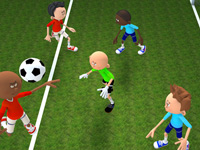
RESOURCES
This article uses material from the Wikipedia articles "Association football" and "Volley (football)", which is released under the Creative Commons Attribution-Share-Alike License 3.0.
© Stories Preschool. All Rights Reserved.
